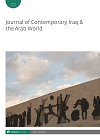
Full text loading...

This work focuses on a contextualized understanding of ‘autocratic authoritarianism’ in Tunisia without approaching its peculiarities in reference to the ideal type of capitalist-liberal democracy and teleological democratization assumptions but instead on its own merits as a Tunisian civilian dictatorship (1957–2010). This latter is reminiscent of French colonial authoritarianism (1881–1956) and traditional beylic monarchic absolutism (1705–1957). For more than half a century, the Tunisian autocratic political system functioned as state-manufactured nationalist-populist authoritarianism associated with a presidential hegemonic ruling party, two successive autocratic presidents and their subservient oppressive elites. The diachronic survey of Tunisia’s political system encompasses the early years of autocracy, under the autocratic rule of the first president of the Republic Bourguiba, 1957–87, as well as the various stages of its consolidation into a police-security state with the second autocrat-President, Ben Ali, 1987–2011. This study also explores the reasons behind the durability of the ruling authoritarian-autocratic elites who played a decisive role in shaping state-society relations under the first and second president and left an indelible mark on the Tunisian polity beyond the 2010 ‘popular uprisings’. Therefore, the question is how, throughout the 2010 ‘Jasmine Revolution’, anti-democratic forces mutated in Tunisian politics in such a way that the end of ‘autocracy’, brought about by people’s uprisings, did not translate into social transformations, economic gains and ‘popular sovereignty’? Put more bluntly, why does the ‘revolution’ remain ‘unfinished’ and the transition ‘endless’ or ‘blocked’?

Article metrics loading...

Full text loading...
References


Publication Date:
https://doi.org/10.1386/jciaw_00090_1 Published content will be available immediately after check-out or when it is released in case of a pre-order. Please make sure to be logged in to see all available purchase options.